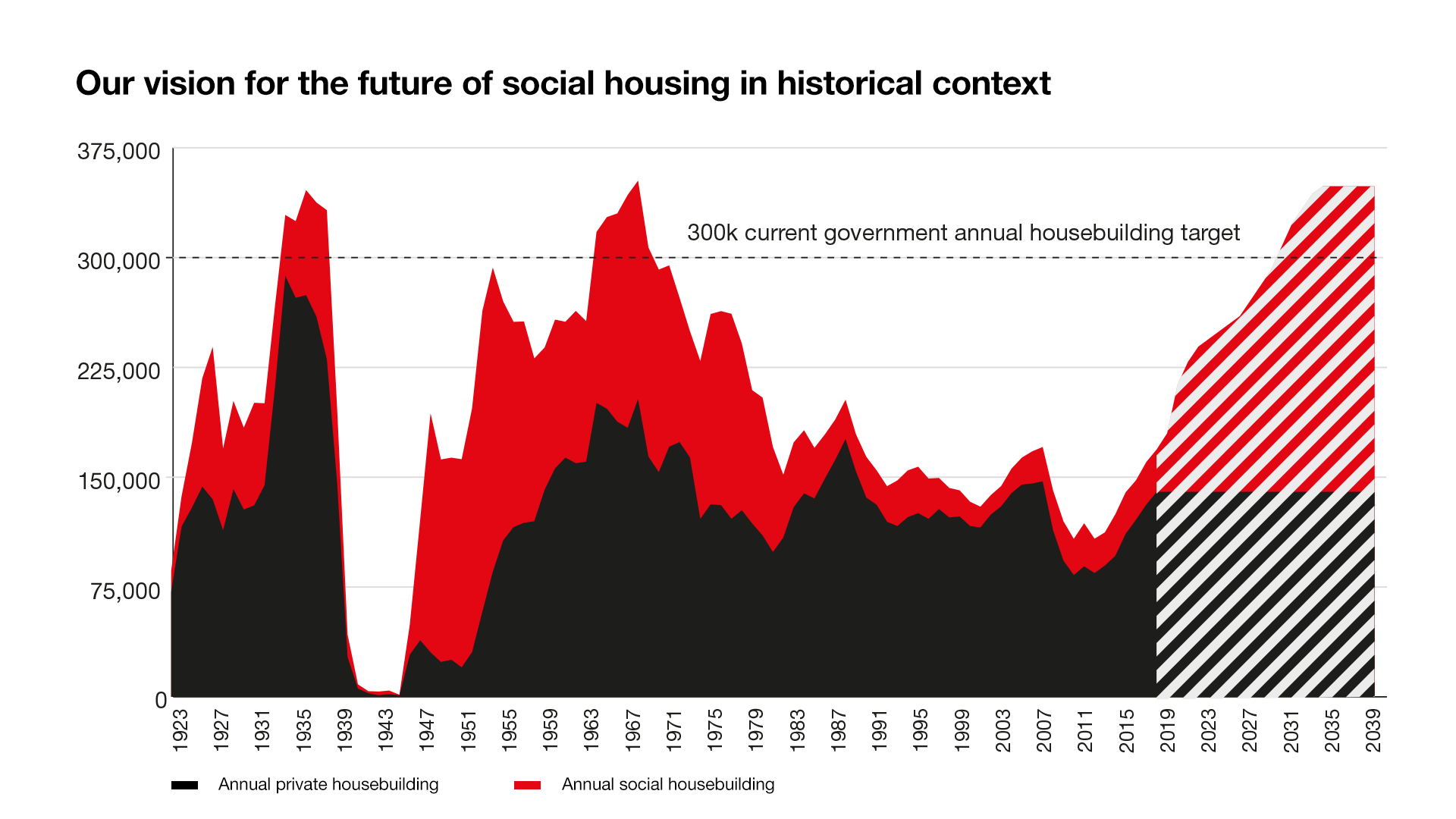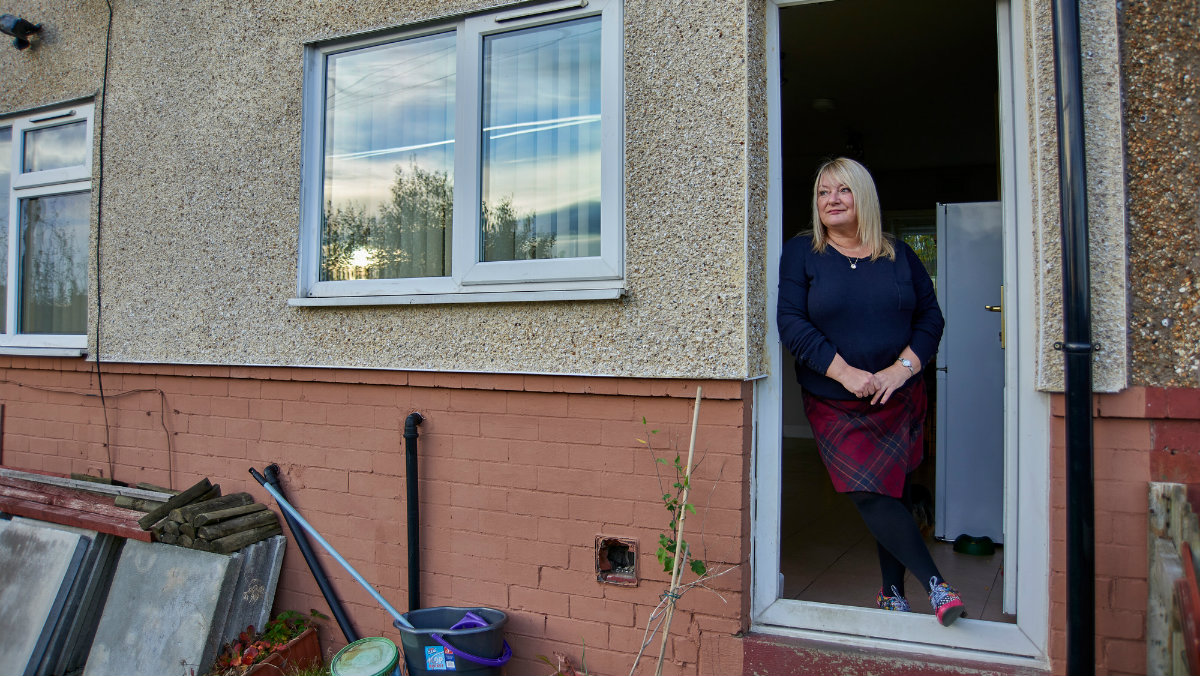Today, almost a year after we announced its launch on this blog, our commission on Social Housing delivers its final report: ‘Building for our Future: A Vision for Social Housing’.
This landmark report was put together by 16 independent commissioners, drawn from all walks of life and political persuasions. The commissioners were not a group of housing experts when they began this project, but every one of them brought experience, expertise and insight to this work. We cannot thank them enough for their efforts.
We set up the commission in response to the Grenfell disaster and the shockwaves it created. We wanted to identify the problems and challenges that those in social housing and in housing need face, and contribute to the debate about wider housing policy – particularly social housing policy.
The report itself gives a broad vision for what social housing in England can and should be over the next 20 years. It sets out some principles around who social housing should be for, how much we need and how we get there, and a view on why this needs to happen now.
It is informed by our own research, knowledge, and experience, the work we do every day in our services supporting those in housing need, and by the over 31,000 people who took part in our Big Conversation about social housing.
A new purpose for social housing
Our commissioners’ main argument is that for far too long, social housing has been seen as an ‘ambulance service’ – nothing more than a safety net for when things go wrong.
This isn’t the vision with which Harold Macmillan or Nye Bevan set out. And it doesn’t reflect the growing numbers of people who need social housing – those priced out by the market for the foreseeable future, but for whom private renting is simply too expensive or chaotic.
With a renewed purpose for social housing it can offer those people affordability, security and a path to home ownership that private renting never can.
During the 1980s and early 1990s, Right to Buy was responsible for an average of 20% of first-time buyers. However, as the stock of social housing has dwindled, so too has the number of first-time buyers entering homeownership – with Right to Buy now contributing to just 4% of first-time buyers.
As it says in Chapter 5 of our report:
‘A new vision for social housing must embrace its potential to provide homes for people from all walks of life. It should provide both security for those in need and a step up for young families trying to get on and save for their future. We envisage a new generation of social housing, providing desirable homes for nurses, mechanics, and others who are struggling in the private rented sector – as well as for those who are homeless, older, or unable to work.’
The report outlines in detail the groups we think need social housing at low rents in modern-day Britain.
How many and how
To deliver this vision, we need more social homes. This is why our commissioners recommend we build 3.1 million new social homes over the next 20 years; an average of 155,000 a year.
This can’t be achieved overnight, and it is inevitable that delivery will have to build up over a number of years. The important thing though is that this is possible – in the mid-1960s, we delivered 150,000 social homes in a single year. It’s been done before, and it can be done again – if it is the major focus of government efforts.
The report sets out the full costings, as well as ideas for delivery. Not all of it requires government spending, but some unavoidably does. Research from Capital Economics estimates the programme would cost £10.7 billion a year. However, two-thirds of this would be quickly recouped through reductions in housing benefit spending, and increased tax revenues – with the programme paying for itself after 39 years. Even the initial outlay represents a fraction of the government’s overall capital expenditure budget, and is far less than is spent on projects like HS2.
Why?
There are many reasons why building 3.1 million more social homes is the right thing to do, but it boils down to a simple truth: public housing at social rents is the only way that we can end our national housing emergency.
The private rented sector, which so many rely on – and is covered extensively in the report as well – can’t meet the needs of those on low incomes or families who need stability and security. Meanwhile, high house prices are locking a generation out of homeownership.
A reinvigorated vision for social housing can be the solution to this, and step into the breach.
This isn’t to say social housing as it is now is perfect. As well as the need to serve a broader group of people, there are problems that were thrown into the public consciousness by Grenfell, when we learnt about the battles tenants had fought to secure necessary repairs. This is why Chapter 6 of the report describes the reforms that are needed around regulation, and to give tenants a stronger voice.
The vision the commissioners have set out isn’t small, but it’s what’s needed: a bigger and better social housing offer to help us end our housing crisis.
What happens next?
Today’s launch is far closer to the beginning than it is the end.
Over the next few years, we will take the commission’s recommendations as the basis of our campaigning; working to persuade the public as well as politicians to come on board. And we will do more detailed policy work to flesh out some of the ideas in more depth.
Read our new report, and view our executive summary. You can also sign our petition calling on the government to build these much needed home.

